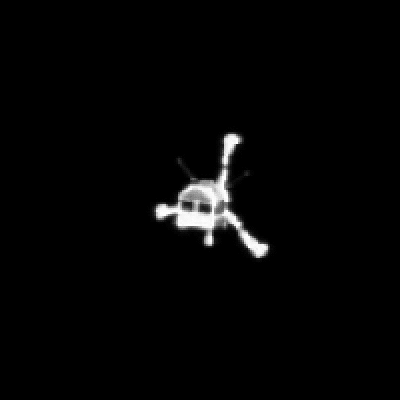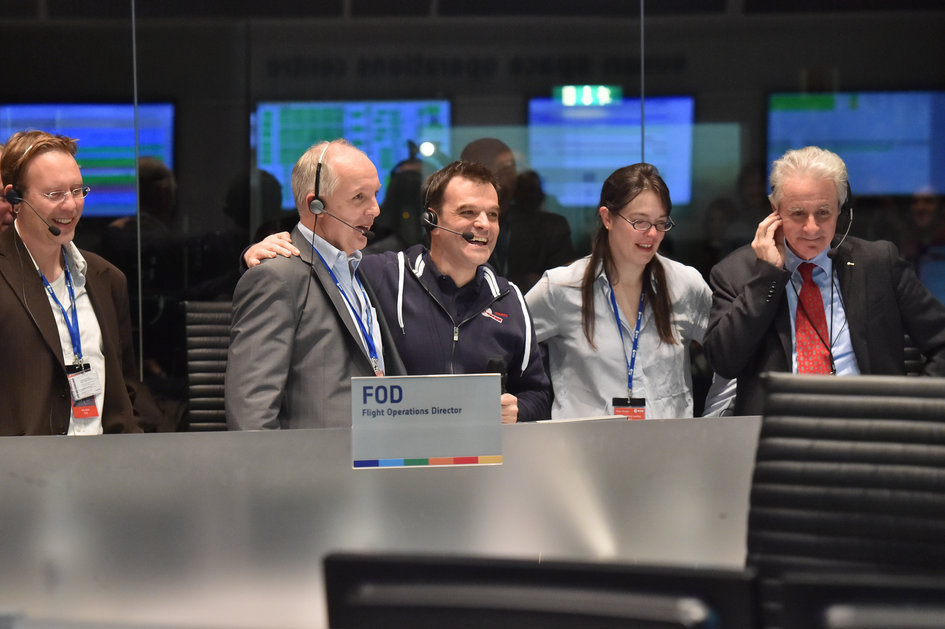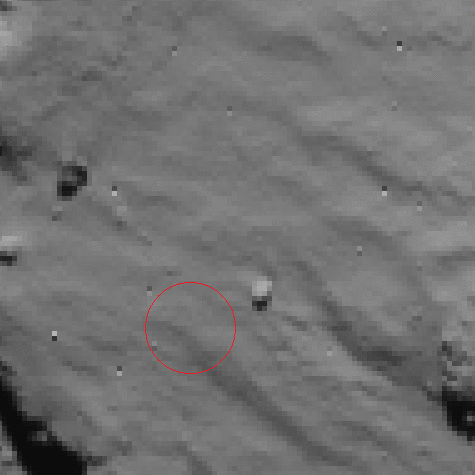In brief: Philae was able to complete and transmit all the prioritised science tasks that it had been set to do.
PHILAE STILL TALKING!
While the search for the final landing site is still on-going, the lander is racing against the clock to meet as many of the core science goals as possible before the primary battery is exhausted. Under the low illumination conditions at Philae’s location, it is unlikely that the secondary batteries will charge up enough to enable extended surface operations.
All of the science instruments were deployed, including the instruments that required mechanical movement, such as APXS, MUPUS, and the drill, SD2, which is designed to deliver samples to the PTOLEMY and COSAC instruments inside the lander. ...
Philae's planned mission is expected to come to an end when batteries are exhausted sometime on Saturday; future contacts are possible if the illumination conditions change as the comet orbits closer to the Sun, enabling solar power to flow again.
The Rosetta orbiter mission continues as planned, with an immense amount of science observations still to come.
FIRST HOUR OF LANDER COMMUNICATION
Update from Stephan Ulamec, Lander manager at DLR:
“We’ve got data – all the house-keeping data and data from COSAC – although we’ve no idea what’s in there yet. The drill (SD2) moved up and down, but again, we don’t yet know what we have.”
“We did the lift and turn; the landing gear lifted by about 4 cm, and we turned about 35 degrees.
“The carousel of Ptolemy was also turned and we are running Ptolemy for a concentrated 'sniff'.
Instrument reminder:
COSAC: The COmetary SAmpling and Composition experiment (detecting and identifying complex organic molecules)
PTOLEMY: an evolved gas analyser, which obtains accurate measurements of isotopic ratios of light elements, such as hydrogen, carbon, nitrogen and oxygen.
SD2: Sampling, drilling and distribution subsystem (drilling up to about 23 cm depth and delivering material to onboard instruments for analysis)
OUR LANDER’S ASLEEP
With its batteries depleted and not enough sunlight available to recharge, Philae has fallen into 'idle mode' for a potentially long silence. In this mode, all instruments and most systems on board are shut down.
"Prior to falling silent, the lander was able to transmit all science data gathered during the First Science Sequence," says DLR's Stephan Ulamec, Lander Manager, who was in the Main Control Room at ESOC tonight.
"This machine performed magnificently under tough conditions, and we can be fully proud of the incredible scientific success Philae has delivered."
...
From now on, no contact would be possible unless sufficient sunlight falls on the solar panels to generate enough power to wake it up.
The possibility that this may happen was boosted this evening when mission controllers sent commands to rotate the lander's main body, to which the solar panels are fixed. This may have exposed more panel area to sunlight.
... However, given the low recharge current available from the solar cells, it is considered unlikely that contact with Philae will be established in the coming days.
The hugely successful Rosetta mission will continue, as the spacecraft tracks comet 67P/C-G on its journey to the Sun.
ESA news release: Pioneering Philae completes main mission before hibernation
Rosetta’s lander has completed its primary science mission after nearly 57 hours on Comet 67P/Churyumov–Gerasimenko.
After being out of communication visibility with the lander since 09:58 GMT / 10:58 CET on Friday, Rosetta regained contact with Philae at 22:19 GMT /23:19 CET last night. The signal was initially intermittent, but quickly stabilised and remained very good until 00:36 GMT / 01:36 CET this morning.
In that time, the lander returned all of its housekeeping data, as well as science data from the targeted instruments, including ROLIS, COSAC, Ptolemy, SD2 and CONSERT. This completed the measurements planned for the final block of experiments on the surface.
In addition, the lander’s body was lifted by about 4 cm and rotated about 35° in an attempt to receive more solar energy. But as the last science data fed back to Earth, Philae’s power rapidly depleted.
... Meanwhile, the Rosetta orbiter has been moving back into a 30 km orbit around the comet.
It will return to a 20 km orbit on 6 December and continue its mission to study the body in great detail as the comet becomes more active, en route to its closest encounter with the Sun on 13 August next year.
Over the coming months, Rosetta will start to fly in more distant ‘unbound’ orbits, while performing a series of daring flybys past the comet, some within just 8 km of its centre.


